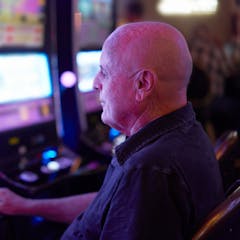
Articles on Neuroscience
Displaying 221 - 240 of 677 articles

New research could help you win an argument.

A scholar who studies consumer decision-making explains just what it is in the human mind that makes people susceptible to nudges toward one behavior or another.

Excessively eating junk foods during adolescence could alter brain development, leading to lasting poor diet habits. But, like a muscle, the brain can be exercised to improve willpower.

From dementia to depression to drug addiction, artificial brain stimulation has been hailed as a landmark medical technology for the future. But safeguards are needed if we want the benefits without the risks.

We have more neurons in our cortices than any other species, courtesy of an early technology – and along with them came our long, slow lives, with plenty of chances to gather around the dinner table.

Tryptophan, found in food, is an important ingredient in the neurotransmitter serotonin. But is that enough to support it as a possible mood booster? The research is decidedly mixed.

Do you ever find you suddenly need to turn off the radio so you can concentrate on what you’re doing? It’s because you only have a finite amount of attention, for particular types of tasks at least.

We fall sway to fake news because it grabs our attention through outlandish claims, suggests false memories and contains appeals to our emotions that align with our politics.

Sugar triggers dopamine “hits” in the brain, making us crave more of it. Sugar also disrupts memory formation.

About one in six people who take the most common medication for Parkinson’s disease will develop addictive behaviours. We found whether this happens depends on a person’s unique brain structure.

It’s been 25 years since autism was redefined and the surge in diagnoses and research began. But while we’ve come along way in our understanding of the spectrum, advances in drug therapies has lagged.

Odd findings in a brain scan of a 29-year-old woman have scientists asking new questions about how our sense of smell really works.

One day we will have a science of consciousness, but it won’t be science as we know it today

We worry about AI developing consciousness, but brain organoids may be more likely to do so.

A scientist explains how the brain works, for younger readers.

Despite its huge complexity, your brain directs its neural traffic in relatively straightforward ways when approaching cognitively demanding tasks such as puzzles.

Suicide is the second leading cause of death for teens in America. But there may be ways to study the stress response and figure out who is most at risk.

Brain functions integrate and compress multiple components of an experience, including sight and smell – which simply can’t be handled in the way computers sense, process and store data.

These tiny nanoparticles might provide a new way to see what’s happening in the brain and even deliver treatments to specific cells – if researchers figure out how to use them safely and effectively.

Honeybees are good at maths, but it was thought they could only count to four. That is, unless you present them with a task in which they are punished with a bitter-tasting drink for getting it wrong.
